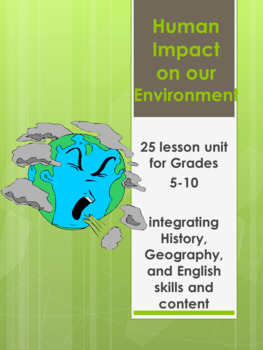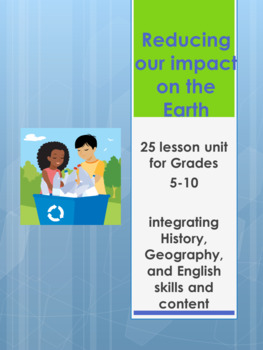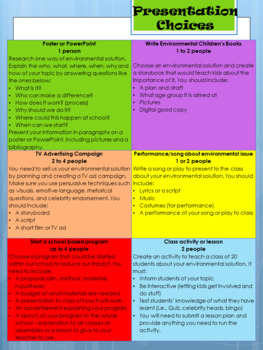BUNDLE 2x 5week units - Human Impact + Reducing our Impact on the Earth
- Zip
Products in this Bundle (2)
Description
I have bundled together 2 of my best-selling units to save you money with all the good stuff included!
HUMAN IMPACT ON OUR ENVIRONMENT
This 5 week unit is designed to help teach students about the many impacts humans have had on our environment.
It incorporates:
* History -skills and knowledge
* Geography - understanding of nature and the world around us
* Science - understanding the environment and how we impact on it
* English - reading, writing, comprehension, viewing and responding
The unit of work includes a plan for 5 lessons per week, roughly 60mins per lesson. It includes activities on:
* Air pollution
* Water pollution
* Land Clearing and Deforestation
* Waste
* Specific environmental vocabulary and spelling from Grades 5-9
* Poetry - Haiku, Acrostic, Quatrains, Cinquains, and more
* Analysis of Dr Seuss' text "The Lorax"
* Analysis of the film "Wall-E"
This product includes all 71 slides with detailed lesson plans, worksheets, websites and resource links, and much more.
**PLEASE NOTE** - if purchased before Jan 14, 2020, there is a link to a video missing on slide 43 (thankyou to the customer who let me know!) Here it is: https://www.youtube.com/watch?v=Se12y9hSOM0&list=PLITdDkbHFB05_ogOen9nll3fYdq04YPTX&index=14&t=236s
The unit for purchase after Jan 14, 2020 has been updated here on TpT.
REDUCING OUR IMPACT ON THE EARTH
This unit is a follow-up to my best-selling unit "Human Impact on the Environment." This unit of work goes for a further 5 week or 25 lessons and now looks at what we can do to REDUCE our impact and help improve our environment and our lives.
This unit includes:
**Unit planner (this includes a suggested order of lessons and activities, but feel free to use these resources whatever way you like!)
**Introductory Lesson
**Detailed Lesson Plans (targeted at specific skills or content)
**Printable Worksheets at 2 differentiated levels
**Teacher Answers to Worksheets
**Persuasive writing lessons
**Assessment tasks and rubrics
**Spelling/vocab words
**All hyperlinked PDF
This unit is very versatile and I have used with students at both Year 7 and 8, though it is also differentiated to be suitable for lower literacy levels of Grade 4 upwards.
Though I am an Australian teacher and have different national standards to work towards, I believe it would cater towards the Common Core Standards listed below also (as pointed out to me by a fellow TpT'er, thankyou!):
Global Environmental Problems and Issues
EVS.912.5a Explain how resources can be preserved to reduce the impact on Earth (e.g., planting new trees after chopping down others).
EVS.912.5b Recognize that some environmental problems are global (e.g., water or air pollution, extinction, deforestation).
EVS.912.5c Recognize what makes a resource renewable or non-renewable.
EVS.912.6a Describe a change or preservation in the environment caused by people around the world (deforestation and replanting of trees).
EVS.912.6b Identify ways humans have changed the global environment (e.g., water quality, air quality, waste management).
EVS.912.6c Recognize that humans can change their environment.
Please preview this product and leave me feedback or ask questions if anything needs clarifying. Thankyou!





